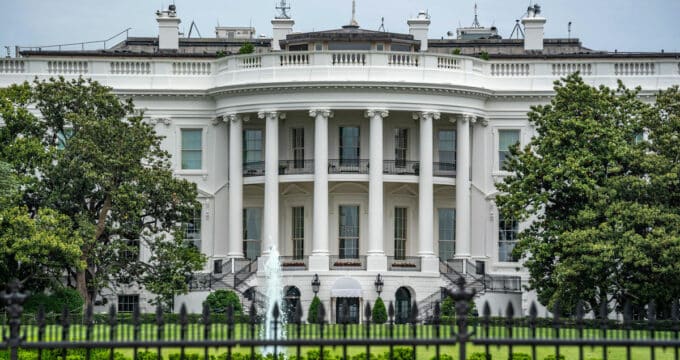New report examines demand for H-1B highly skilled worker visas in US metropolitan areas
The H-1B programme allows US employers to hire foreign workers in specialty occupations for a temporary period of time. The Brookings Institute, a nonprofit public policy organisation based in Washington, DC, recently released a new report examining the demand for H-1B workers in US regional economies. The results show that demand varies across the US and - with a nod towards policymakers - is not necessary aligned with current funding streams. The H-1B programme is particularly interesting for current and prospective international students (especially those in STEM fields) who may be keen to remain in the US for post-graduation work experience. The H-1B provides additional opportunities beyond the F-1 programme - which was expanded earlier this year - and this new research reveals where demand for these visa holders lie - in terms of cities and specialties - and where foreign graduates might go to fill this demand.
Background on H-1B visas
Despite the fact that demand for highly skilled workers is ubiquitous across advanced economies, specialised skills tend to concentrate in specific regions of the world. For example, more than half (56 percent) of the world’s engineering bachelor’s degrees are earned in Asia, with another 17 percent in Europe and just 4 percent in the United States. China alone accounts for a third of the world’s undergraduate engineering degrees, and has experienced dramatic growth from 280,000 degrees awarded in 2000 to 1 million in 2008. Even smaller Asian nations outpace the United States on this measure: the combined natural sciences and engineering degrees earned in South Korea, Taiwan, and Japan exceeded those earned in the United States, even though America’s population is much larger. Despite these disadvantages, the United States still has the comparative advantage of being the global hub of academic training with about 723,000 international students who make up 3.5 percent of US higher education enrolment. The United States also has the largest stock of immigrants in the world (42 million). Thirty percent of working-age immigrants—about 8.8 million people—have at least a bachelor’s degree. Notwithstanding this highly skilled foreign-born population, the legal hurdles to retaining these workers combined with global competition for them have led US employers to report significant difficulty in finding resident workers to fill STEM (science, technology, engineering, and math) and other specialty occupations. While there is considerable debate over potential skills shortages, the ability of the US educational system to supply skilled workers is paramount to maintaining global competitiveness. This concern is even more pronounced in some regional labour markets. The mismatch between demand and supply of highly skilled workers points to a need for understanding the geographical distribution of the demand for foreign skills at the US metropolitan level. These US metros rely heavily on the H-1B visa programme, begun in 1990 to provide a means for employers to hire temporary high-skilled foreign workers in specialty occupations. With the exception of fashion models, all H-1B visa recipients are required to have at least a bachelor’s degree or equivalent experience. Visas are granted in three-year increments with the option to extend up to six years. Referred to as a “dual intent” programme, the H-1B visa allows foreigners to work temporarily on a non-immigrant visa and at the same time, with employer sponsorship, apply for permanent residency. The H-1B visa programme represented approximately one percent of all non-immigrant visa admissions into the United States in 2010. Currently, H-1Bs allocated to for-profit employers are capped at 65,000 per year, with an additional 20,000 visas for workers with advanced degrees from US universities. Research, non-profit, and government organisations can also request H-1B workers, and those visas are uncapped.
STEM occupations make up 64 percent of all H-1B requests, even though these jobs comprised only 5.4 percent of national employment in 2010. Among research and nonprofit uncapped employers, life scientists, postsecondary teachers, and health care workers are the most requested workers. Computer occupations, engineers, and financial specialists are the most requested workers from corporate, capped employers.
New regional research
The majority of analytical work on H-1B visa usage to date has been done at the national level with little discussion of local labour market demand or the extent to which metropolitan employers fill their skills needs with foreign workers. While the debate over labour competition between native and foreign workers continues, the challenge for policymakers is to figure out how best to meet the demands of employers for high-skilled workers. The Brookings study recognises the concerns and limitations of both sides of this debate, but provides a new way of looking at the high-skilled immigration issue by examining the demand for H-1B workers in US regional economies. This demand is not necessarily evidence of a high-skilled labour shortage among native workers. Rather, it may reflect employers’ preference to hire foreign workers.
Nevertheless it is important to recognise that demand is not uniform across the United States.
An understanding of the location of demand for skills at the metropolitan level will help stakeholders and policymakers recognise how employers within metro areas utilise foreign skills, and how the federal government can either facilitate or hinder this relationship. This study aims to provide state and metropolitan leaders in government, business, education, and workforce development with the information they need to respond to regional skills deficits. In turn, these leaders will be better equipped to work with the federal government to address changes to immigration and education policy so that the United States and its metro areas can build and maintain a globally competitive skills base. Below are various highlights of the report's key findings. Demand for H-1B workers has fluctuated with economic and political cycles over the last decade and reflects a wide range of employers’ needs for high-skilled temporary workers. Employer requests have exceeded the number of visas issued every year except from 2001 to 2003 when the annual cap was temporarily raised from 65,000 to 195,000. Employers requesting the most H-1B visas are large companies subject to the cap specialising in information technology, consulting, and electronics manufacturing. STEM occupations account for almost two-thirds of requests for H-1B workers; healthcare, finance, business, and life sciences occupations are also in high demand. Over the last decade, the federal government has distributed about US$1 billion from H-1B visa fees to fund programmes to address skills shortages in the US workforce. Brookings found that 106 metropolitan areas had at least 250 requests for H-1B workers in the 2010–2011 period, accounting for 91 percent of all requests but only 67 percent of the national workforce. As might be expected, the New York, Los Angeles, San Francisco, San Jose, and Washington DC metro areas make up the top five metro areas in terms of H-1B demand. The New York metro area alone accounts for 16 percent of all H-1B applications. Considerable variation exists among these metro areas in the number of workers requested and the ratio of requests to the size of the total metro workforce. On average, there were 3.3 requests for H-1Bs per 1,000 workers in these 106 metro areas, compared to 2.4 for the nation as a whole. Metropolitan areas vary by the number of employers using the H-1B programme and the cap status of the employers. Demand in corporate metro areas (such as Columbus, IN and Seattle, WA) comes predominantly from private employers subject to the annual visa cap, while in research metro areas (such as Durham, NC and Ann Arbor, MI), the demand is driven by universities and other research institutions exempted from the cap. In mixed metro areas (such as Atlanta, GA and Trenton, NJ), a variety of employers are demanding temporary highly skilled foreign workers. In 92 of the 106 high-demand metropolitan areas, STEM occupations accounted for more than half of all requests. Computer occupations were the most highly requested occupation group in all but 11 metros of the 106 high-demand metros, where engineering, healthcare practitioners, and postsecondary teachers were more requested. Metropolitan areas also vary on occupational concentration, ranging from 74 occupation groups requested in the New York metro area, to 15 groups requested in Bloomington, IL. H-1B visa fees designated for skills training and STEM education have not been proportionately distributed to metro areas requesting the highest number of H-1B workers. Metropolitan areas with a high demand for H-1B workers are only receiving US$3.09 on average per working age person 16 years or older of the technical skills training grants compared to US$15.26 for metros that have a lower demand for H-1Bs from 2001-2011. Among the 106 high demand metro areas, Wichita, KS; Portland, ME; and El Paso, TX received the highest amount of money relative to their H-1B demand. Meanwhile, other metro areas that request much higher numbers of H-1B workers received less money. STEM education funds are similarly distributed with the high H-1B metros receiving only US$1.00 per working age person 16 years or older compared to US$14.10 in the low H-1B metros. The full report begins with background on the H-1B visa programme, including its intent, rules, and implementation. The paper provides an overview of the key terms, data, and methods employed in the analysis. The results of the analysis are shared—total H-1B requests, intensity, employers, occupations, and funding streams— first at the national level and then with metropolitan variation. Finally, the report concludes with a discussion of how these trends link to policy and what changes leaders at the national, state, and local levels can make to meet the demand for a high-skilled workforce and to effectively target the funding in areas where it is most needed. Source: Brookings Institute
Most Recent
-
ICEF Podcast: Together for transparency – Building global standards for ethical international student recruitment Read More
-
New analysis sounds a note of caution for UK immigration reforms Read More
-
The number of students in higher education abroad has more than tripled since the turn of the century Read More


















